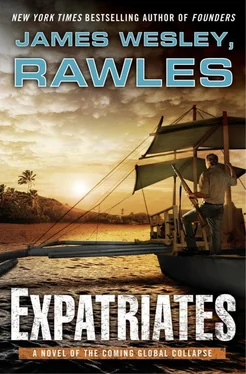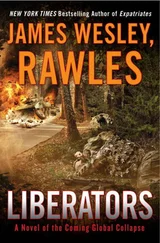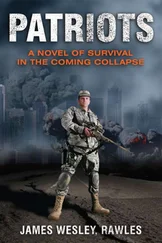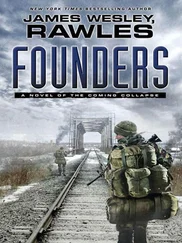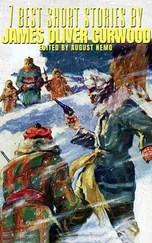The vehicles headed south quickly, each following a preplotted GPS route. This circuitous route used all secondary roads until they were south of Katherine, in the hopes of avoiding contact with Indo-Malaysian forces. For the first fourteen hours, the convoy stopped only to refuel, using their Mack MC3 diesel tanker truck. They jokingly called this camouflage-painted turbocharged diesel nine-ton truck their Mad Max 2 Tanker.
At near midnight they reached the Ti Tree Airport, which was just inside of friendly lines. Ti Tree was an old cattle station town. A RAAF and RAAAF contingent at the airport were there to greet them and to direct them to a vehicle dispersal area. The airport had already been bombed once and was under sporadic observation by Indonesian drones, so it was not considered safe to leave the vehicles near the airstrip or to park in a regular pattern.
After six hours of sleep, they resumed their convoy to Alice Springs. In all, the drive was eight hundred miles, and they covered most of that in the first day. Once they reached Alice Springs the following day, the officer in charge made inquiries with his brigade commander via the RAAF’s satellite phone. Ironically, he was ordered to set up a new FLB in the bush at a water bore three miles east of Ti Tree Airport. This was less than one and a half miles beyond where his unit had bivouacked the night before. They spent the afternoon shifting supplies, refueling all of their vehicles, and refilling the tanker.
By the next evening they were establishing the new Ti Tree FLB on Anmatyerre aboriginal land. His men were exhausted by the time they had the camouflage nets suspended above all of the vehicles. The lieutenant had thought it was important to do so before dawn. Some of the men grumbled about this, but they stopped complaining when they heard the sound of RAAF machine gunners shooting at a Wulung drone as it passed overhead.
The dusty Ti Tree FLB was not nearly as comfortable as Site M, but it would be their home for the next three weeks.
42
A TIME TO EVERY PURPOSE
“When it comes time to die, be not like those whose hearts are filled with the fear of death, so when their time comes they weep and pray for a little more time to live their lives over again in a different way. Sing your death song, and die like a hero going home.”
—Chief Aupumut, Mohican, 1725
Near Darwin, Northern Territory, Australia—March, the Third Year
Soon after their invasion of Australia began, the Indonesians started to shuttle fighter aircraft and fighter-bombers to airfields in northern Australia. Because they lacked aircraft carriers, this necessitated flying with minimal armaments and carrying drop tanks. Ordnance for the planes all had to come to Australia, so the planes had only limited operational capability with a low operational tempo, allowing just two sorties per day.
When war with Indonesia began to look likely, a Civilian Auxiliary Australian Air Force (CAAAF) was created almost spontaneously. Most of the volunteers were retirees who owned their own light planes. The CAAAF—also jokingly known as the Old Farts’ Australian Air Force (OFAAF)—had two distinct cadres of members: those who had family obligations, and those without. The latter formed the nucleus of the organization. Many of them were self-designated as “too old or too sick to care” and volunteered for the riskiest missions. These were mostly “teaser” flights aimed at getting the Indonesian Air Force to scramble their fighter planes. The goal was to flush the Indonesian fighters out of their hardened revetments so they could then be shot down by any of the dozens of Stinger Stay Behind teams that were deployed along the northern Australian coast. Since the Indonesians had more operational aircraft than the RAAF, it was essential that they be destroyed either on the ground or as they were taking off or landing. Everyone realized that if their air superiority were allowed to continue, the Indo planes would make it very costly for Australian Army forces to maneuver. Only with freedom of maneuver would they be able to counter the Indo-Malaysian advances.
One much-publicized septuagenarian couple in the CAAAF was Edward and Paula Hadley from Alice Springs. Edward Hadley was a retired banker. Before they left on their final flight, Mr. Hadley told a reporter from The Australian , “When you’re seventy-three and have been diagnosed with Stage Three pancreatic cancer, you can be a lot more fearless than a healthy twenty-something who has a wife and kids.”
They day before they left, they visited their son, who agreed to take charge of their mixed-breed Bitzer dog, Max. When they left Max and his leash and food bowl, their son realized they weren’t coming back.
Mr. Hadley was flying his Turbo Mooney 231, which he had owned and meticulously maintained for twenty-five years. His wife was flying a donated twenty-three-year-old Cessna 172. The Hadleys spent their last night before the fateful mission at an abandoned cattle station near Stapleton. Like many other stations with its own airstrip and AVGAS fuel tanks, the owners had willingly donated their use to the CAAAF.
At just after eight A.M. the next morning, the Hadleys came into Darwin at treetop level. Two Indonesian F-16 fighters were scrambled in response, taking off side by side. The Indo pilots foolishly left their flare dispensers turned off. Before the jet fighters could turn toward the two light planes, they were downed in rapid succession by Stinger POST missiles while still less than eight hundred feet off the ground. Five minutes later, after the Hadleys had circled the Darwin Airport several times, they lined up their planes’ noses toward the military ramp at the south side of the airfield. Another Indonesian fighter—an F-5—taxied out of its revetment. The Hadleys’ two planes dropped their flaps and angled toward it, making a well-calculated approach at ninety miles per hour just off the deck. In rapid succession, they slammed the Mooney and the Cessna into the F-5, spraying wreckage across the taxiway and setting all three planes ablaze.
• • •
In the preceding year and a half, most of the Australian Army had been tied down with quelling civil disturbances in major cities on the southeastern coast. A limited call-up of the Australian Army Standby Reserve had only been partially successful, given the chronic fuel shortages and general chaos in the cities.
Before the Crunch, Indonesia had about 235,000 men under arms, including one armored cavalry brigade and fourteen infantry brigades. These brigades included ninety infantry battalions, one parachute battalion, nine artillery battalions, eleven antiaircraft battalion, nine engineer battalions, one independent tank battalion, seven independent armored cavalry battalions, and four independent para-commando battalions.
After some reshuffling three of Malaysia’s four army divisions were put under the operational control of Indonesia, bringing with them the majority of the Malaysian army’s one thousand armored vehicles.
After the Crunch, the Indonesians also hastily assembled another eleven reserve infantry brigades. These units were led primarily by retired officers and NCOs who had been recalled to active service. The second-line units were equipped with older-generation equipment, some of which dated back to World War II. These brigades were intended for protection of the home islands, thus freeing up the regular army for the planned invasions.
There were also twenty-seven new Pembebasan Kerombakan Komando (PKK) battalions formed. These 140-member units were a separate organization from the 786 Heroes. The PKKs trained to infiltrate enemy territory to mine roads and to blow up bridges, trestles, communications facilities, port facilities, and other key infrastructure south of the 24th parallel. Given the strategic goal of the invasion, oil fields, fuel pipelines, and terminals in the northern half of the country were intentionally ruled out as potential targets. But fuel refineries and related infrastructure south of the 24th parallel were on the target list.
Читать дальше
